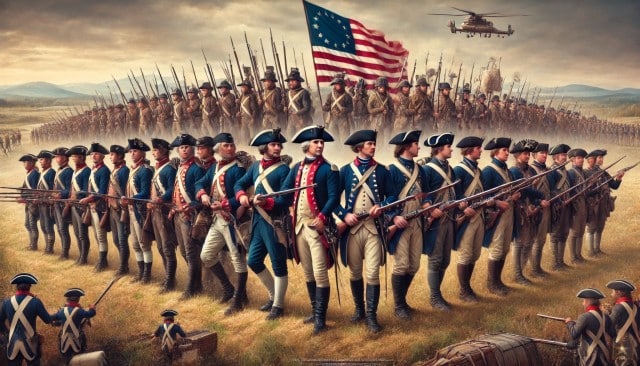Introduction
Imagine a young nation, freshly emerged from the crucible of revolution, standing at a critical crossroads. The year is 1783, and the (United States) has just won its independence from (Great Britain) after eight grueling years of conflict. But victory on the battlefield does not automatically translate to stability, security, or even survival as a unified nation.
The American Revolutionary War had been more than just a military campaign it was a profound social and political transformation. Thirteen disparate colonies, united by a common cause, had defeated one of the world’s most powerful empires. Yet, as the smoke of battle cleared, a new and perhaps even more challenging war began.
Origins of the United States Army
After independence
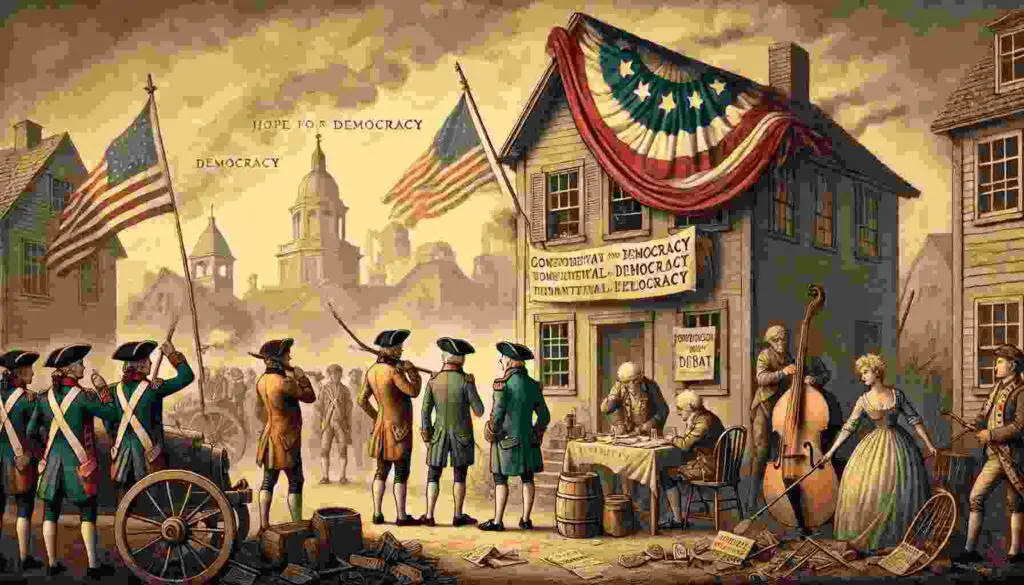
After gaining independence in 1783, the United States made the decision to reduce the size of its military. At that time, people believed that having a large army could threaten the country’s independence and democracy. After the Revolutionary War, many Americans felt that the biggest danger, which had been from Great Britain, was no longer a threat. Therefore, there seemed to be no need for a large military.
This decision was also influenced by the fact that the country was facing serious financial problems. Instead of spending money on a large army, American leaders decided to focus on developing the nation. There was also a fear among many Americans that a powerful military could lead to military rule, which could hurt democracy and individual freedoms.
As a result, in 1783, the (Continental Army) was disbanded. This move was intended to reduce the country’s military strength and help the new government focus on more pressing issues to stabilize and grow the nation.
The United States was in a tough financial situation after the Revolutionary War. The government had borrowed large amounts of money and printed more currency to pay for the war, which led to massive debt and inflation. By 1783, the national debt had reached about $42 million, a huge amount for that time.
This financial crisis wasn’t just an economic issue—it also posed a direct threat to the country’s security. Without a stable financial system, the young nation struggled to maintain any kind of military readiness.
When the Continental Army was disbanded in 1783, soldiers had not been paid for months due to the country’s financial problems. Even though the government had borrowed money and printed more currency during the war, there was still not enough to pay the soldiers, which left them frustrated and angry. This was a major challenge for the newly independent United States.
The Disbanding of the Continental Army in 1783
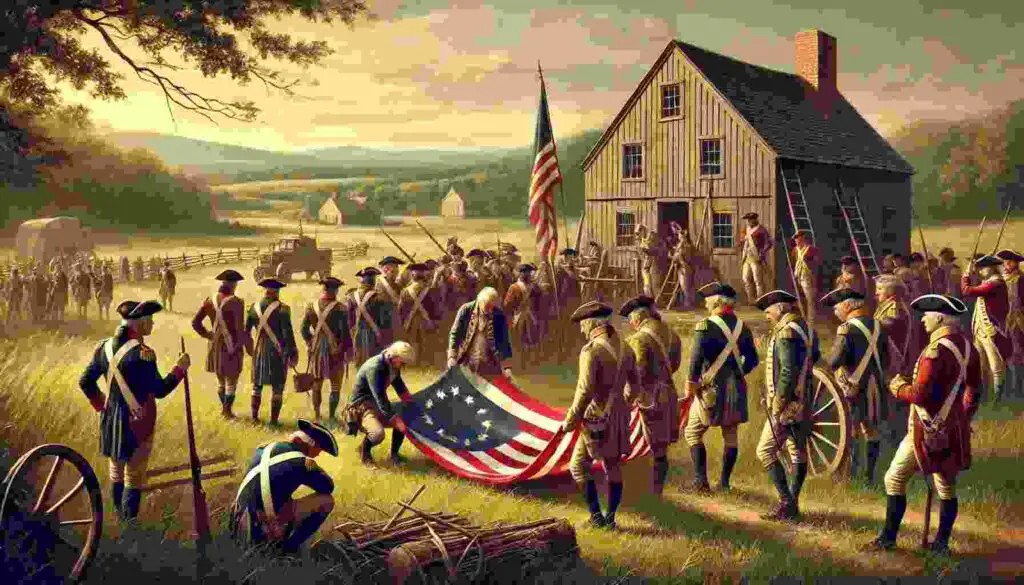
In 1783, the disbanding of the Continental Army was an important moment in early American history. This happened after the United States won its independence from Great Britain, which was officially recognized through the Treaty of Paris. The decision to end the army and its effects reveal key political and social changes in the newly formed nation.
Background: The Treaty of Paris (1783)
The Treaty of Paris marked the end of the American Revolutionary War. Britain formally accepted the United States as an independent nation.
No Need for a Large Army
After the war, many Americans felt there was no longer a need for a large army. They believed that keeping a big army might be dangerous for the future of the young nation.
Reasons for Disbanding the Army
- Fear of Tyranny
Many Americans were afraid that having a large and permanent army could lead to government abuse, similar to what they had experienced under British rule. - Political Leaders’ Views
Congress and other leaders believed that smaller forces, supported by state militias, would be enough to protect the country. - Financial Struggles
The new nation was facing serious financial problems, and maintaining a large military was simply too expensive.
In 1783, the Continental Army was disbanded to reduce the country’s military power and focus on other necessary measures for the stability of the new government.
Rebellion Number 1 Newburgh Conspiracy
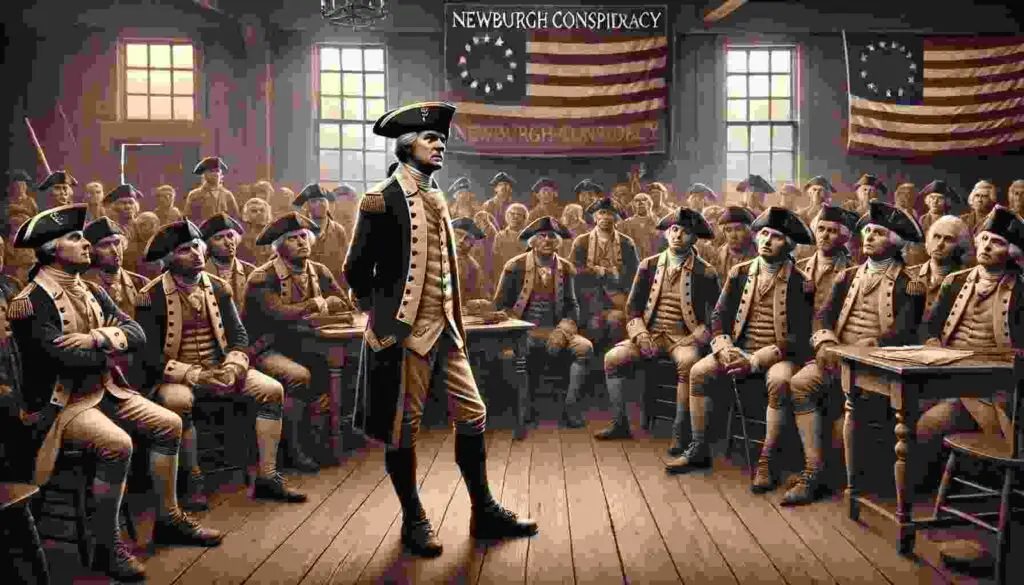
The Newburgh Conspiracy of 1783 was a critical moment in U.S. history. Soldiers in Newburgh, New York, were angry after months without pay, as the government struggled with debt after the Revolutionary War. Some officers considered pressuring Congress with a revolt, but General George Washington stopped it with a powerful speech on March 15, urging loyalty and patience. This event highlighted the need for the U.S. to address its financial issues and better support its army.
” After the Newburgh Conspiracy, the U.S. government decided to establish a permanent army to meet its military needs. As a result, in 1784, the “First American Regiment” was created “.
Origins of the United States Army First American Regiment
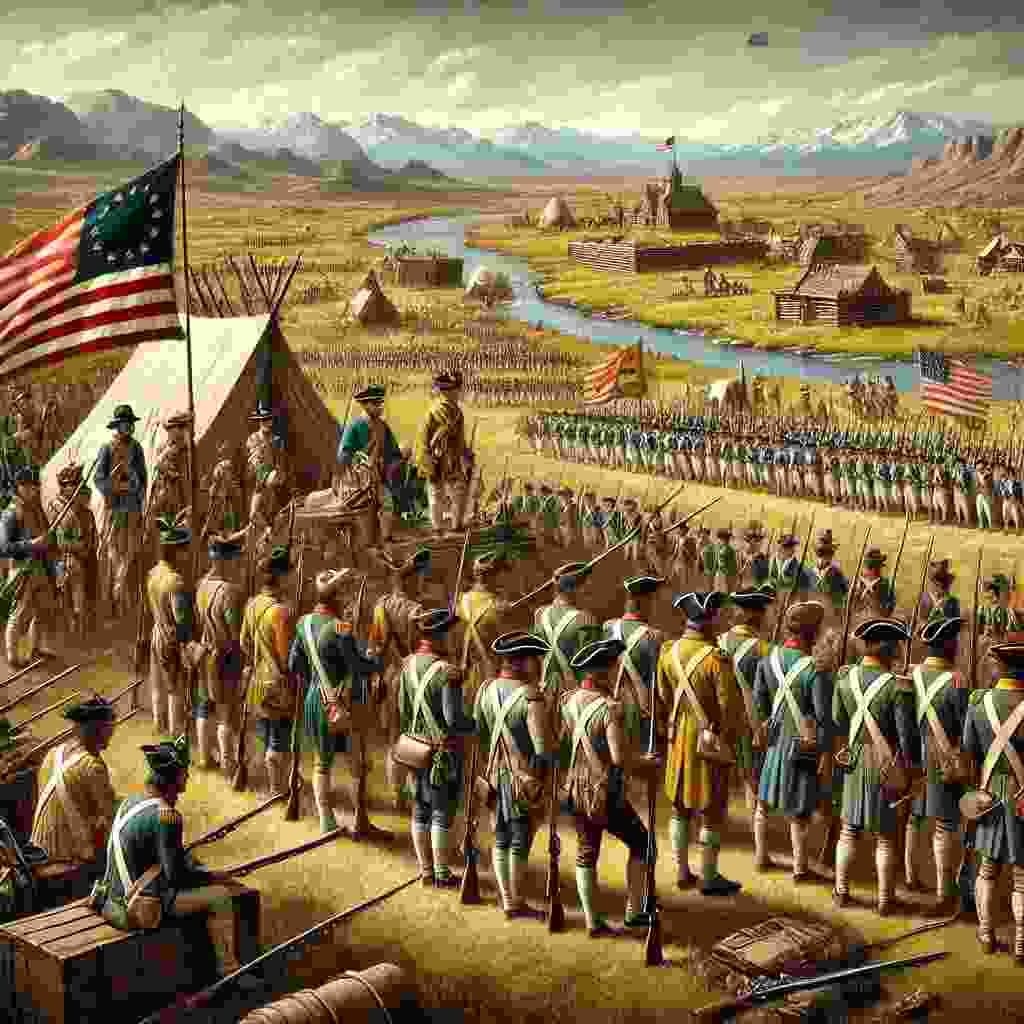
After the Continental Army was disbanded in 1783, the United States realized the need for a new, permanent military unit to protect its borders. To address this, the First American Regiment was established in 1784. This was a significant step in building the foundation of the U.S. Army, forming a small but organized and effective military force.
Key Details of the First American Regiment
1. Size and Origins of the United States Army
- Number of Soldiers: The regiment included 700 soldiers. While this was a relatively small force, it was considered adequate for the country’s needs at the time.
- Organization: Soldiers were recruited from different states, with each state responsible for contributing a portion of the regiment. This ensured shared responsibility for national defense.
2. Purpose and Duties
- Protecting Western Borders:
- At the time, British military forts and outposts still existed in the western territories, posing a threat to the young nation.
- Native American tribes, often supported by the British, frequently attacked settlements in these areas.
- Key Responsibility: The primary job of the First American Regiment was to defend the country from these dangers and maintain security in the frontier regions.
The establishment of the First American Regiment marked a turning point in the history of the U.S. military, laying the groundwork for a more structured and professional army in the years to come.
Rebellion Number 2 Shays’ Rebellion
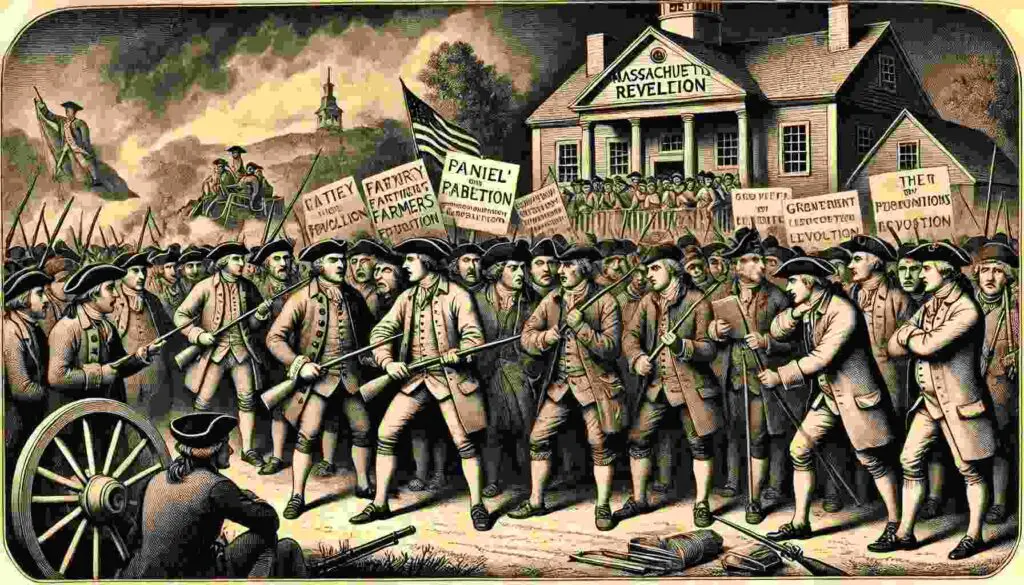
Shays’ Rebellion took place in 1786-1787 in the state of Massachusetts. It was caused by economic problems and harsh tax policies. This rebellion happened because of the financial crisis that followed the Revolutionary War and the unfair treatment of farmers.
Causes of the Rebellion:
Economic Crisis:
- After the Revolutionary War, the United States was facing serious financial problems.
- The government had borrowed money during the war, and to pay it back, heavy taxes were placed on the states.
- Farmers struggled to pay off their debts because their income from farming had decreased.
Debt and Land Seizure:
- The government in Massachusetts started seizing the land of farmers who couldn’t pay their debts.
- Farmers who lost their land were thrown in jail, which made many people angry.
Lack of Paper Currency:
- Farmers wanted the government to issue paper currency to make it easier to pay their debts, but the government refused.
Unfair Legal System:
- The courts mostly sided with the wealthy, and farmers felt they couldn’t get justice.
Leadership of Daniel Shays:
- Daniel Shays, a former soldier in the Revolutionary War, became the leader of the rebellion.
- He united farmers to protest against the Massachusetts government.
Goals of the Rebellion:
- Farmers wanted the government to stop seizing their land.
- They asked for lower taxes.
- They wanted better ways to pay off their debts.
- They demanded the government issue paper currency to help the economy.
Outcome of the Rebellion:
- Shays and his supporters attacked courts to stop legal actions against farmers.
- The Massachusetts government sent in a militia to stop the rebellion, and by 1787, it was crushed.
- Many rebels were arrested, but later pardoned.
Effects of the Rebellion:
- Shays’ Rebellion made American leaders realize that the federal government needed to be stronger and have an organized army.
- It played an important role in leading to the Constitutional Convention of 1787, where the U.S. Constitution was created to give more power to the federal government.
- The rebellion showed how important economic stability and justice are for the growth of a nation.
How Was the Rebellion Stopped?
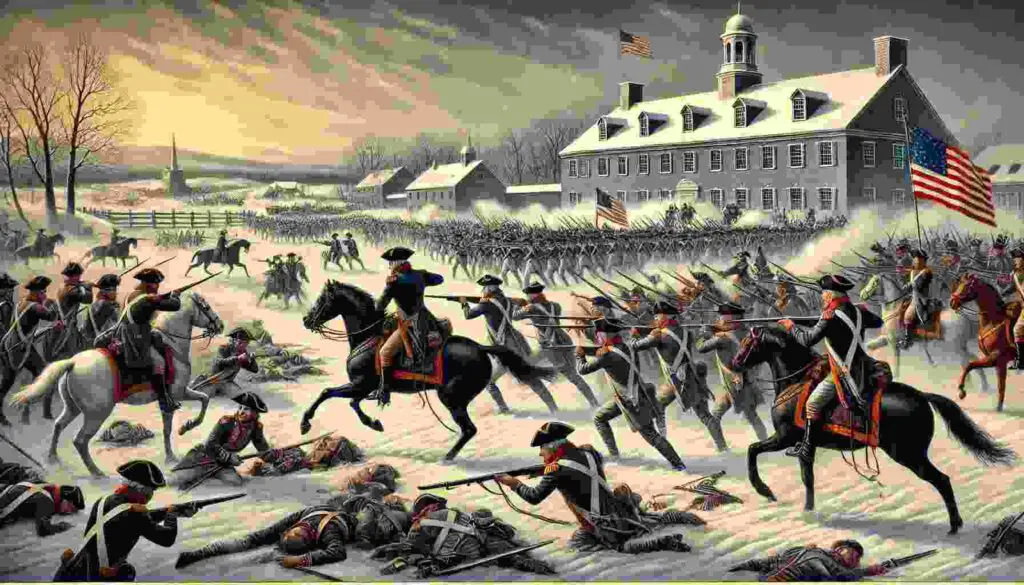
The Massachusetts government acted quickly to end the rebellion:
- Forming a Militia:
Since there wasn’t a national army to stop the rebellion, Massachusetts raised a militia. Wealthy citizens paid to form this group to defend the state.
Leadership of General Benjamin Lincoln:

The state asked (General Benjamin Lincoln) to lead the militia. He gathered about 4,400 soldiers to confront the rebels.
- The Springfield Armory Battle:
In January 1787, the rebels tried to seize weapons stored at the (Springfield Armory). The militia, under Lincoln’s command, defeated them, forcing the rebels to retreat. - Arresting the Rebels:
Many rebels, including Daniel Shays, were arrested. Although some were sentenced to death, most were later pardoned, including Shays himself.
What Happened After the Rebellion?
(Shays Rebellion) ended in early 1787, but it left a lasting impact:
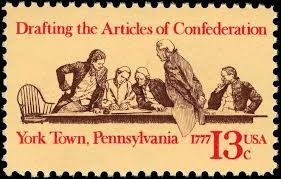
- The rebellion showed how weak the federal government was under the (Articles of Confederation), as it couldn’t provide a national army to help Massachusetts.
- This event motivated leaders to create a stronger federal government, which eventually led to the drafting of the U.S. Constitution in 1787.
Why Is This Important?
Shays’ Rebellion is remembered as an example of how ordinary people can stand up for fairness, but it also taught the importance of a strong government to maintain order and balance. This event played a key role in shaping the early history of the United States.
The Origins of the U.S. Army Legion of the United States: Why It Was Created and How It Developed
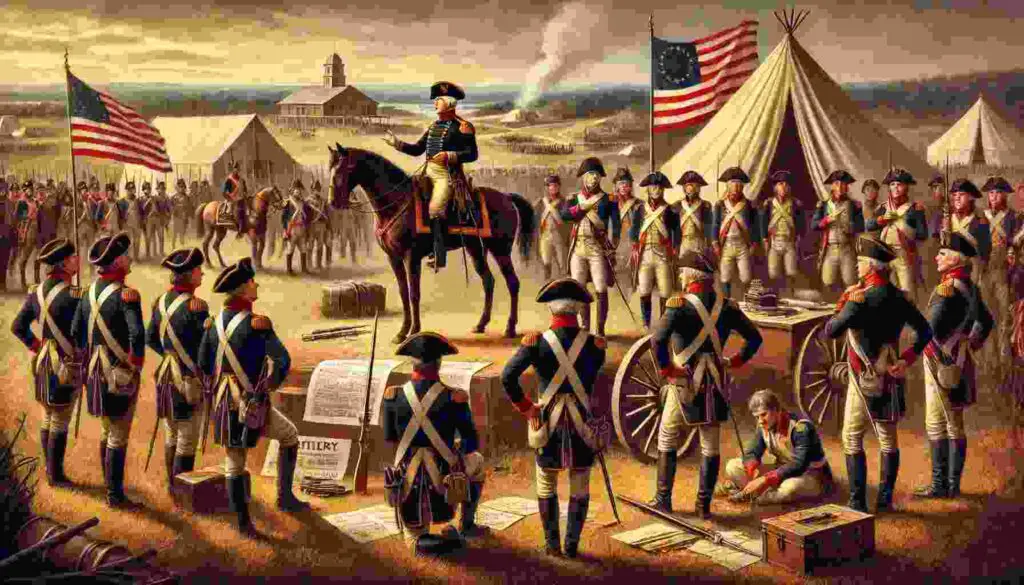
Background and Reason for Creation:
After the Continental Army was disbanded in 1783, the U.S. government realized that relying only on state militias was not enough to defend the country. Events like Shays’ Rebellion and attacks from Native American tribes on the frontier showed the need for a well-organized and permanent army.
The United States needed a military force that could:
- Protect its borders.
- Maintain order during internal conflicts.
- Strengthen national unity and security.
Formation of the Legion of the United States:
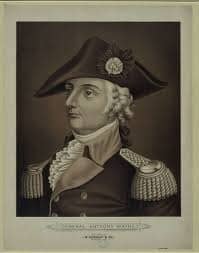
In 1792, Congress passed a law to create the (Legion of the United States). This was a permanent, professional army led by (General Anthony Wayne). Its purpose was to defend the nation and introduce modern military training and strategies.
Early Organization and Training:
- Training Began in 1792:
Soldiers were trained to use modern weapons and follow advanced battle tactics. - Divided into Four Units:
The Legion was split into four main parts:- Infantry (foot soldiers)
- Artillery (soldiers who operated cannons)
- Cavalry (soldiers on horseback)
- Engineering units (focused on building and repairing military structures)
This structure was inspired by the best European armies of the time.
Key Achievements:
The Legion proved its effectiveness in 1794 during the (Battle of Fallen Timbers).
- Battle of Fallen Timbers (1794):
The Legion defeated Native American tribes in the Northwest Territory. This victory led to the (Treaty of Greenville), which secured peace and allowed American settlers to expand westward.
When It Was Fully Operational and Its Transition:
- Fully Operational by 1795:
By this time, the Legion had become a well-trained and professional army. - Merged with the U.S. Army:
In 1796, the Legion of the United States was reorganized and became part of the United States Army. This marked the beginning of a permanent and modern military force for the nation.
Key Victory of 1794: Battle of Fallen Timbers
Background: The Battle of Fallen Timbers took place on August 20, 1794, in the northwest frontier regions of the United States. It was fought between Native American tribes and (American forces). The British military and the local tribes had been working together to prevent American settlers from moving into these borderlands.
Outcome: Under the leadership of General Anthony Wayne, the Legion of the United States won a decisive victory. After this battle, the Native American tribes were forced to sign the Treaty of Greenville in 1795, which required them to give up their land.
Importance: This victory helped bring peace to the border regions. It weakened British influence in the area and strengthened America’s independence and control over its territories.
Conclusion:
The Legion of the United States played a crucial role in building a strong foundation for the modern U.S. Army. It helped secure the nation’s borders, maintain peace, and prepare the country to handle future challenges. This professional army was a key step in the development of America’s defense system.
More Information Click Here

